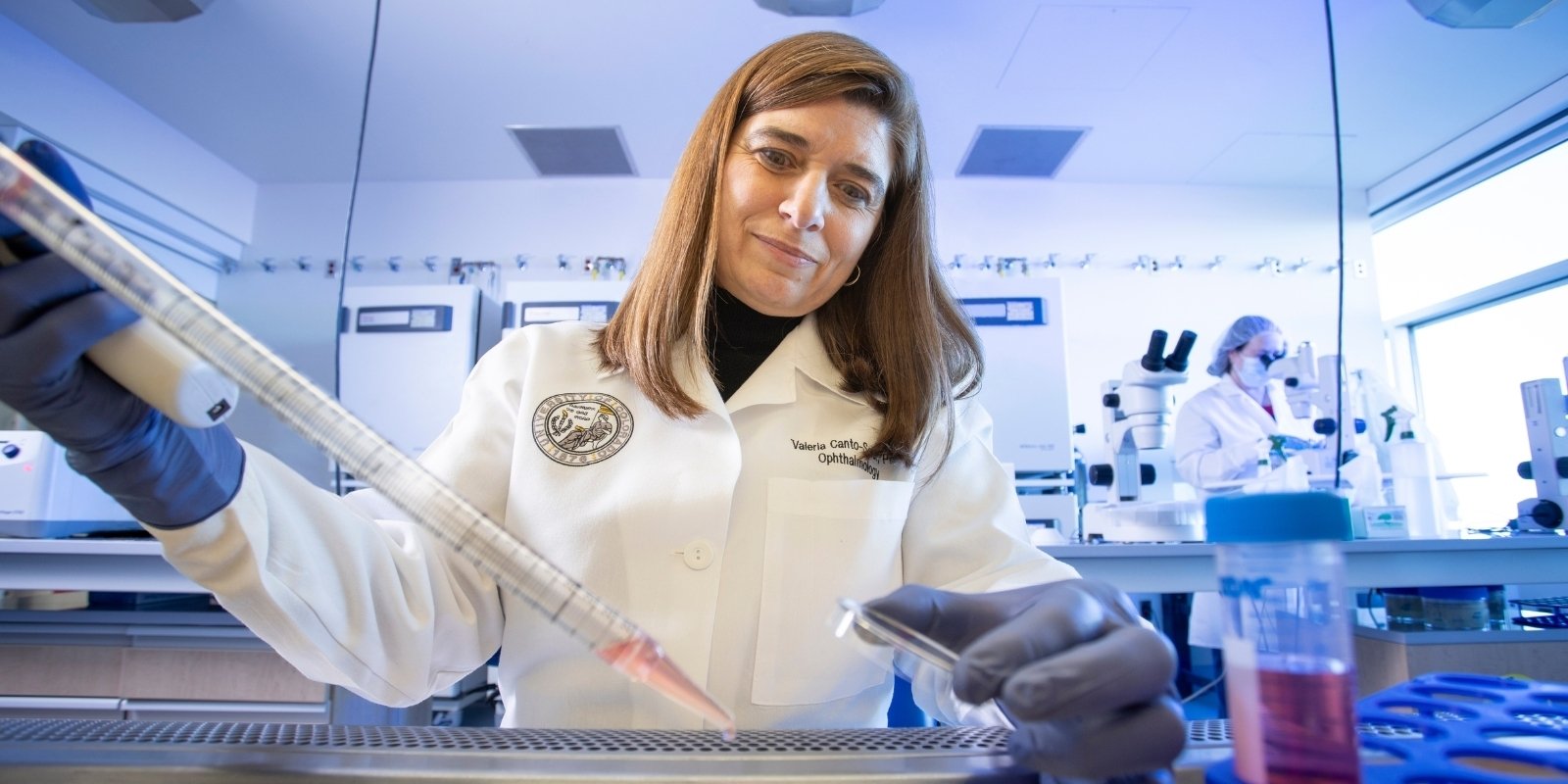Sugar is the new fat, and according to Bonnie Jortberg, PhD, RD, CDCES, it’s widely misunderstood. As a top expert in diabetes lifestyle management, Jortberg is baffled by the number of times a newly diagnosed patient tells her emphatically: But I don’t even eat sugar.
In those cases, Jortberg gently explains that other things like genetics and obesity trigger type 2 diabetes and that today, sugar is hidden everywhere.
With the proliferation of sugar in foods, all eyes turned to the crystal-like sweet stuff in the past few years, prompting a rise in sugar-elimination diets, earning high-fructose corn syrup (HFCS) a bad reputation and generating misconceptions and bad information.
Making it even harder, the truth about sugar – muddied by political drivers and complicated by early research findings – often falls somewhere in between fact and theory, said Jortberg, diabetes researcher and associate professor in the Department of Family Medicine at the University of Colorado School of Medicine.
It’s a mad, mad sugar world
“It is confusing. And there are just a lot of misconceptions out there – and a lot of controversy, too,” said Jortberg, an international expert in lifestyle management for type 2 diabetes, obesity and cardiovascular disease who works in the Primary Care Diabetes Lab at the CU Anschutz Medical Campus.
“Basically, the average American needs to cut sugar intake by about two-thirds. Beverages are the No. 1 place that people are getting added sugar in their diets, and it’s not just soda (juices, energy drinks and specialty coffees also fuel America’s sugar overload). – Bonnie Jortberg, PhD, RD, CDCES
Sugar, which comes in a whopping 60-plus forms, is a vital macronutrient, a carbohydrate necessary for energy and cell survival. Derived naturally from fruits in the form of fructose, sugar is extracted from sugar cane or sugar beets as sucrose. Sucrose, or table sugar, is made up about equally of fructose and glucose.
“Honestly, the sugars are all fairly similar in their chemical makeup and in how our body processes and utilizes them, with the exception of fructose,” Jortberg said.
And then there’s fructose
Fructose, found in vegetables and fruits and extracted from corn for high-fructose corn syrup, is the only sugar metabolized by the liver. The unique process, along with a proliferation of HFCS in the nation’s food supply since the 1970s, has spurred research on fructose.
“There is some concern that a high fructose intake can lead to some things around non-alcoholic fatty liver disease and can alter metabolism, because your liver is really involved with metabolism,” Jortberg said, adding that’s largely how high-fructose corn syrup gained its bad reputation.
While HFCS-specific health issues are possible, Jortberg said initial studies years ago sounding the alarm were flawed, and most research remains in preliminary, animal-model phases. The fallout has consumers believing unproved information, like cane sugar in their soda is healthier than HFCS, and that HFCS (fructose, glucose and water) isn’t even sugar, she said.
Sugar, sugar, everywhere
“What is valid about the criticism of high-fructose corn syrup is that it just started being added to everything,” Jortberg said. As with sodium, sugar is an effective preservative for the abundance of boxed, canned and otherwise processed and packaged foods lining U.S. store shelves.
As HFCS proliferated on food labels over the past 40-plus years – adding consistency, extending shelf life and enhancing flavor – the nation’s collective weight grew. Less than 15% of U.S. adults were obese in the 1970s. Today, the rate exceeds 40%.
Sugar breakdownMonosaccharides (one molecule), or "simple sugars," include: • Glucose • Fructose • Galactose (found in breast milk and formula) Disaccharides (two molecules), include: • Sucrose (one glucose, one fructose molecule) • Lactose (one glucose, one galactose molecule) • Maltose (two glucose molecules) Chemical formulas: • Sucrose: C₁₂H₂₂O₁₁ • Glucose: C₆H₁₂O₆ • Fructose: C₆H₁₂O₆ |
“You’ve seen, along with the introduction of HFCS, huge increases in the rates of obesity, diabetes and cardiovascular disease, among other things,” Jortberg said. “However, the actual chemical composition of high-fructose corn syrup and how your body processes it is not very different from other sugars.”
‘Added’ sugars: the real culprit
Unless they have diabetes, Americans’ biggest health issue today stems from “added” sugars, Jortberg said. “There are a lot of natural sugars that are found in food. For example, fruit contains fructose. Dairy products contain lactose, which is a type of sugar.” It’s the lure of those center-aisle foods that shoppers should most resist, she said.
“It is just mind-boggling, the average amount of added sugar the average American eats in a year,” Jortberg said, citing the American Heart Association (AHA) estimate of 66 pounds. “That’s equal to almost 20 teaspoons daily.”
Nine teaspoons of added sugar (about 36 grams) is the maximum recommended daily allowance for men, according to the AHA. For women, it’s only six (about 24 grams). Drinking one cola (39 grams of sugar) or mocha latte exceeds that limit in one shot.
“Basically, the average American needs to cut sugar intake by about two-thirds,” Jortberg said, adding that many consumers could reach that goal just by cutting out sugary drinks. “Beverages are the No. 1 place that people are getting added sugar in their diets, and it’s not just soda.” Juices, energy drinks and specialty coffees fuel America’s sugar overload, she said.
Unraveling the sugar myths
Although sugar is sugar, natural foods high in sugar at least come with healthy nutrients, such as fiber, vitamins and minerals, Jortberg said. Even honey and pure maple syrup, although technically “added” sugars, contain some antioxidants and some minerals, such as iron, zinc, calcium and potassium, Jortberg said.
“But from a weight-control perspective, there’s not that much difference between how many calories you get in a teaspoon of maple syrup and how much you get in a teaspoon of regular sugar,” she said. “You still can’t lather everything in maple syrup.”
Oftentimes, however, natural sweeteners, such as syrup and honey, provide a sweeter taste sensation for the same amount as regular table sugar. “So if you can use less honey to sweeten something because you get a higher amount of sweetness from that, then that can be a benefit, too, because overall you are actually consuming less sugar and calories.”
“But people can become obese without eating a high amount of sugar and develop diabetes. They just over-consume calories, and they don’t get enough exercise. So, in an indirect way, it does lead to developing diabetes, but through the pathway of obesity.” – Bonnie Jortberg, PhD, RD, CDCES
A widespread myth among people with diabetes is that it’s OK to eat unlimited fructose with the disease, Jortberg said.
“Sadly, all sources of sugar have the same effect on blood sugars. And this is one of the hardest things I have to do when I work with my research patients who have diabetes is tell them they really have to limit how much fruit they eat. Whole fruit is best, but too much fruit or fruit juice can raise blood sugar levels the same way as if they ate a cookie.”
Another even more widespread misconception is that sugar causes diabetes, Jortberg said. The fact is: Sugar causes obesity, and obesity triggers diabetes, she said.
“Once you develop diabetes, you do have to watch sugar intake. But people can become obese without eating a high amount of sugar and develop diabetes. They just over-consume calories, and they don’t get enough exercise. So, in an indirect way, it does lead to developing diabetes, but through the pathway of obesity.”
.jpg)



